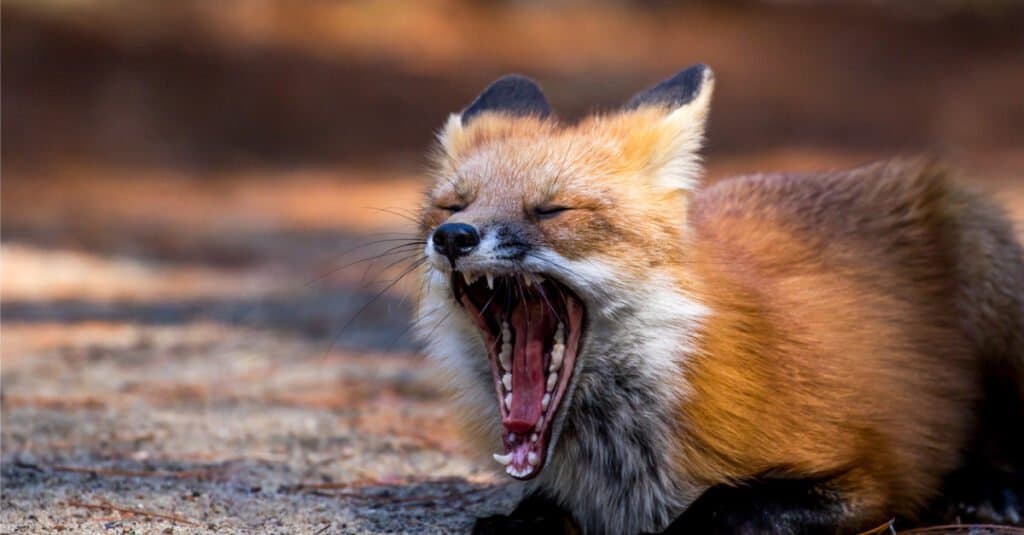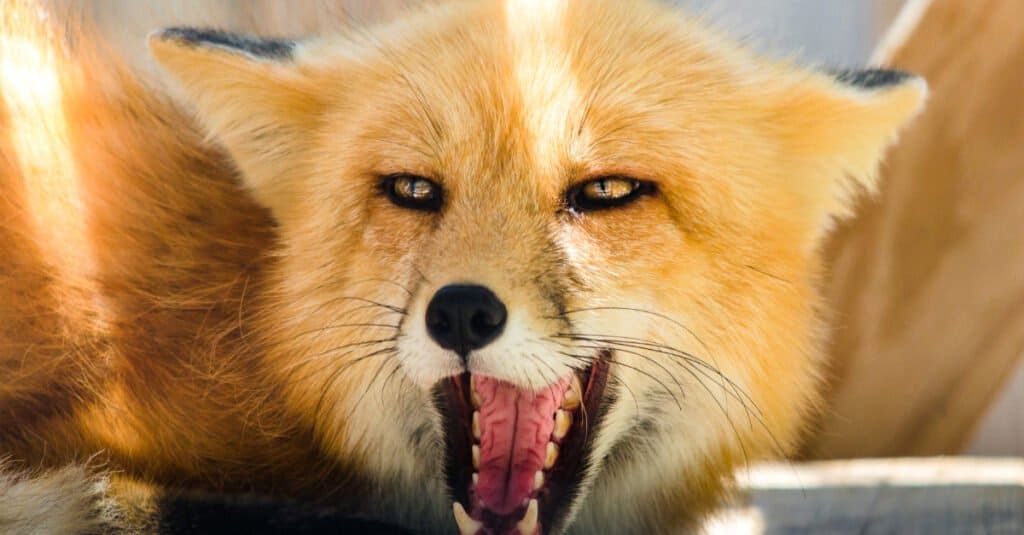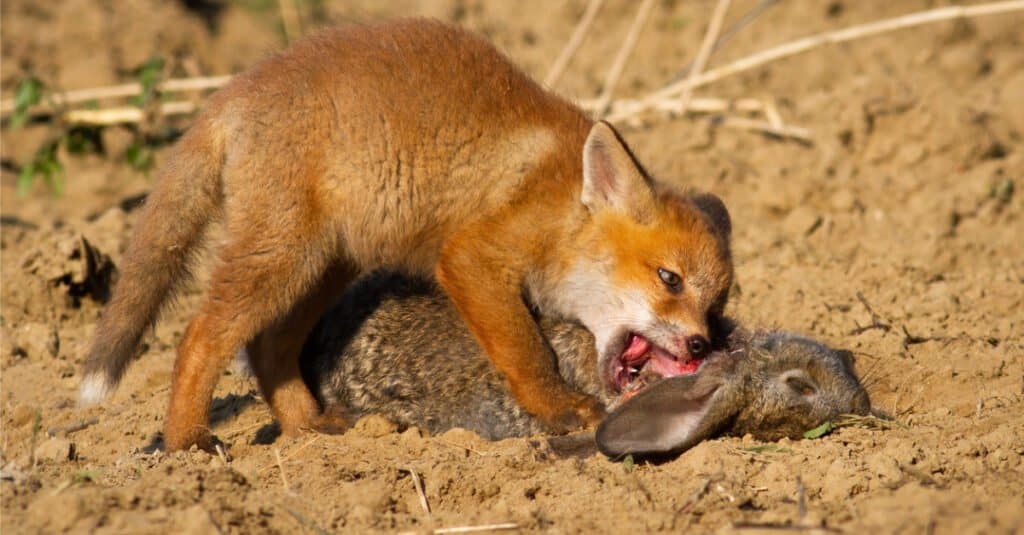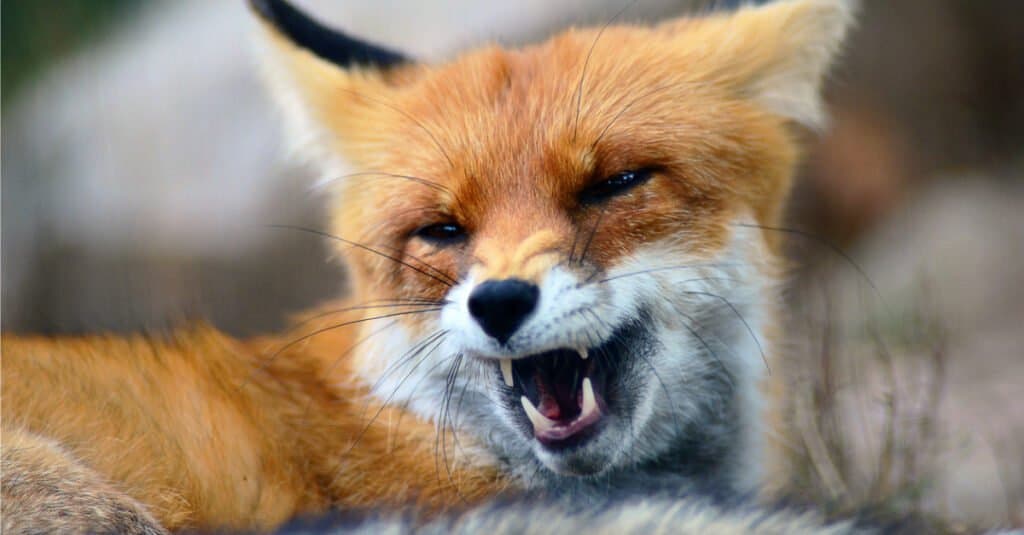Foxes are mammals that belong to the Canidae family, which makes them closely related to the dogs we have at home, jackals, and wolves. In fact, they look a lot like dogs, only smaller than most huge dog breeds and have bushier tails, elongated and V-shaped rostrums, and sharper pointed ears. Like domesticated dogs, foxes have an average life span of 6 to 7 years, but in captivity, a fox can live up to 13 years.
There are about 37 different species of extinct or living foxes, but in a more specific sense, there are some species of foxes classed as “real” foxes, or the genus Vulpes, a sub-family under Caninae. These 12 “true” foxes include the Vulpes vulpes or red fox. The other species that do not belong to the genus Vulpes include the South American fox, the Arctic fox, the bat-eared fox, North American gray fox, and the crab-eating fox.
Foxes are generally omnivores, as they eat both berries and other animals. However, they are seen mostly as carnivores because they mainly hunt other animals for food. That being said, foxes are known to chew on meat, which means they need robust, sharp teeth to gnaw on their prey. Below are some facts about fox teeth you need to know.
How Many Teeth Do Foxes Have?

A red fox, known as the most common type of fox, has 42 teeth.
©iStock.com/RT-Images
Red foxes, the most common type of fox, have 42 teeth. These are made up of 12 incisors, 16 premolars, 10 molars, and 4 canines that help them grab on their prey and kill them. This is the typical formula of a fox’s dental structure: 1/1 (canines): 3/3: incisors: 4/4 (premolars): 2/3 (molars). The number of teeth in the top and bottom, represented as top/bottom, of one side of the jaws is expressed by the equation.
As a carnivore, foxes have prominent carnassial pairs. These carnassial pairs are also present in wolves as these are unique characteristics of most meat-eaters. These pairs, which are made up of the upper premolar and the lower first molar, work together to shear hard materials such as flesh and cartilage. Their canines are also prominent, which is another indicative trait of a carnivore, and they are extremely effective at latching onto a prey during the hunt.
What Do Foxes Teeth Look Like?

Foxes have pointed teeth to assist them in killing their prey.
©iStock.com/Tyrannax
As meat-eaters, foxes have lengthy and pointed teeth to assist them in gripping on their prey and tearing meat apart.
When you look at a fox’s skull, you can easily distinguish it from the rest of the Canidae family and from other carnivores as they have long, narrow snout, and slim, pointed teeth, which are characteristics that are very unique for a fox. The fox’s skull measures 3 to 4 inches in length and is quite elongated, featuring large eye sockets with deep pits above them.
Unlike cats which usually have 3 to 4 teeth behind their canines, foxes have at least four premolars and three molars in each side of their mouth, up and down. Foxes also have six incisors in the front of their mouth and two large canines at the top and bottom.
What Do Foxes Eat?

Foxes eat rabbits, mice, rats, and reptiles.
©iStock.com/JMrocek
Foxes eat a wide variety of foods. They are adept hunters, hunting and eating other small animals as well as carrion and other dead meat. However, they are not strictly carnivorous; in fact, they are omnivores, as they consume berries and fruit as well as meat.
Foxes have exceptional vision, hearing, and smell, and they can easily detect prey from a long distance. Foxes love to prey on smaller animals such as rabbits, mice, rats, insects, reptiles, amphibians, and birds, to name a few. A number of plant materials, such as berries and fruits, are eaten by these omnivores as well. A fox diet varies from season to season depending on what is available. A hungry red fox will continue to hunt even if it is no longer hungry, and it will store extra food by burrowing it beneath leaves or in dirt.
Foxes catch mice for food by jumping up in the air and pointing all its four legs down as it lands above the mouse. This move is called pouncing, and it is a popular hunting strategy for foxes. The hues of the fox’s fur blend in with its environment, allowing it to mix in nicely with its surroundings, which they use as another strategy to sneakily hunt for prey.
Do Foxes Have Fangs?

Foxes do not have fangs, but their Canine teeth are often mistaken for them.
©iStock.com/Film Studio Aves
When foxes snarl, you will notice four long, sharp, and pointed teeth that somehow resemble fangs. But no, these are not fangs. “Canine teeth” refer to these pointed fangs that protrude from either side of the incisors. On their lower jaw, there is a matched, though smaller, lengthened pair of canine teeth.
Canine teeth are the same whether they’re found on a fox, a stallion, a baboon, a jaguar, or any other animal with sharp teeth. This elongated tooth structure was probably initially recognized in dogs, and then afterwards was discovered that most mammals share the same dental form as dogs. Canine teeth are the longest set of teeth in a fox’s mouth so they are one of the most visible and noticeable as well.
Why Do Foxes Open Their Mouths?
When watching some videos about foxes, you may notice that they often open their mouths wide while facing other foxes. Well, it is tempting to think that they are just highlighting the impressive set of teeth they have (because they do!), but when foxes do this, as surprising as it is, they are not being aggressive or instating their dominance, like other predators.
In reality, this mouth gaping attitude represents a more friendly behavior. It is actually a greeting, a gesture of camaraderie, and possibly an invitation to play. As a matter of fact, this kind of gesture has been studied to be a submissive display among foxes.
The photo featured at the top of this post is © iStock.com/Leon Gin
Thank you for reading! Have some feedback for us? Contact the AZ Animals editorial team.






